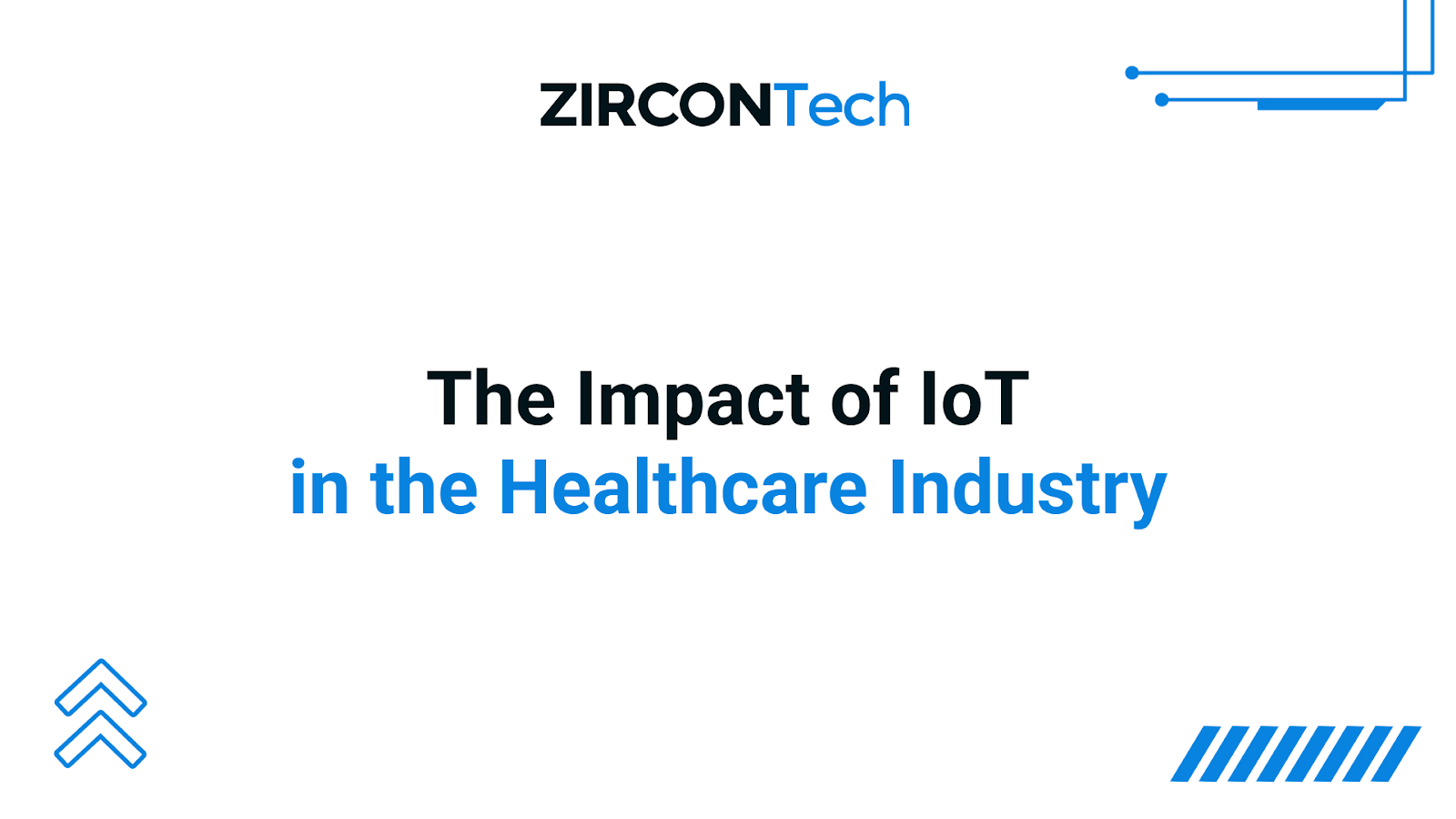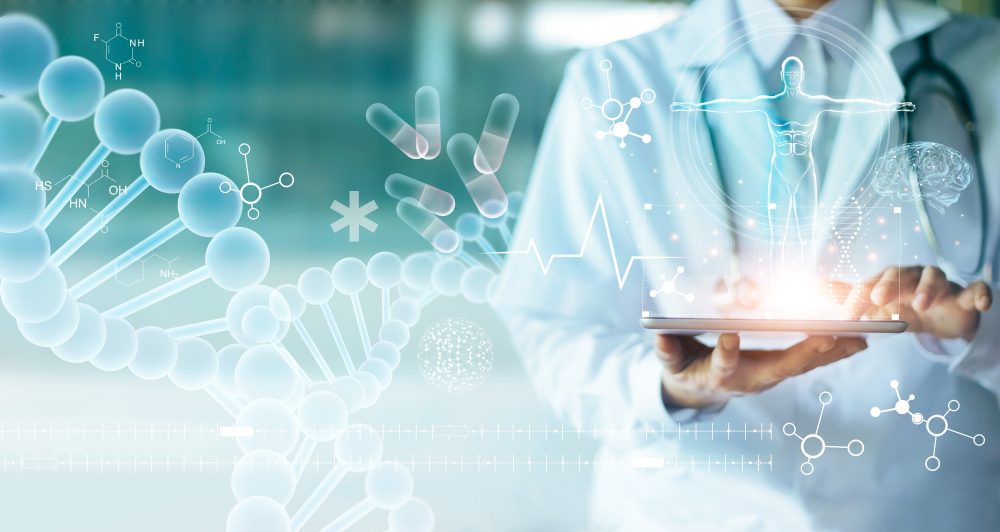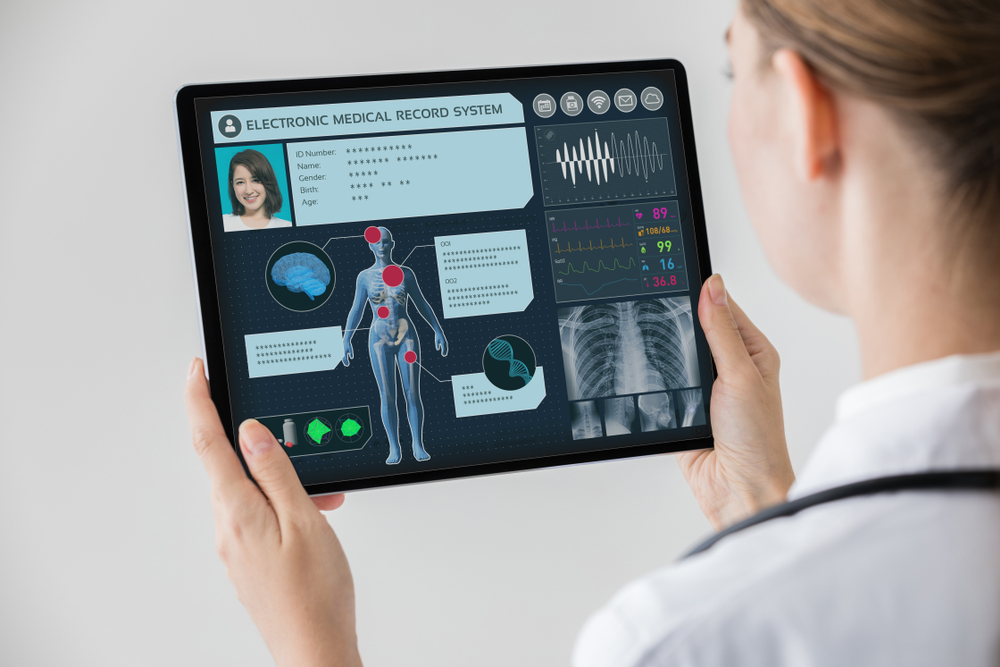The Impact of Internet of Things (IoT) in the Healthcare Industry

Few areas illustrate the impact of the digital revolution on the real world more vividly than the Internet of Things (IoT). This title is given to the network of physical devices and sensors connected to the internet that are able to collect and share data automatically.
The innovative functionality delivered by the IoT leads to greater real-time insight and better decision-making in a host of different commercial contexts. These include home automation, traffic, supply chain logistics, and many more. In each of these areas of activity, the IoT has made a massive difference to the operation of day-to-day tasks.
And perhaps no sector has benefited more than the healthcare industry. The IoT healthcare impact has been dramatic. There is even a specific title for this phenomenon – the Internet of Medical Things (IoMT).
The number of healthcare-related connected devices working in the IoMT has been estimated at 14 billion in 2023. That’s a spectacular number, but there are suggestions that it could almost double between now and the end of the decade, with 25.4 billion devices hooked up by 2030.
ZirconTech has extensive experience in the development of IoT solutions. We are fully aware of the benefits delivered by this network of connected devices, and the potential for further innovation to drive commercial success in years to come. So let’s take a deeper look into IoT healthcare in 2023; the applications it drives, and the improved medical outcomes that connected devices can deliver.
Internet of Things in Healthcare: Evolution, Examples, and Devices
The phrase “Internet of Things” was first used in 1985 as the world of science speculated about the potential applications of this powerful new digital network that was set to span the globe. However, it was not until the 1990s that the IoT began to become a reality, as ever more sophisticated devices were launched that were able to collect data and communicate with each other, and their human masters.
Ever since then, the development of IoT medical devices has continued at an impressive rate. As long ago as 2015, Goldman Sachs estimated that IoT healthcare devices had the potential to save the United States more than $300billion a year in healthcare expenditure.
However, it was the Covid-19 pandemic that brought home to people and healthcare professionals across the world the potential benefits of IoT healthcare applications. With people around the globe forced to isolate in response to the threat of coronavirus, the adoption of devices that could collect data from, and in effect deliver care to, patients was stepped up considerably.
In 2020, the IoT healthcare market around the globe was estimated to be worth more than $41billion. It is now on course to quadruple by 2026, with a likely value then of more than $176billion.

IoT Healthcare: Monitoring Devices
To illustrate the widespread, considerable and positive impact the Internet of Medical Things has had on the healthcare sector, let’s look at some specific examples of devices that can bring significant benefits both to patients and healthcare providers.
Remote Patient Monitoring
This is a catch-all description that includes many different ways in which people suffering with a variety of conditions can be helped by the Internet of Things in healthcare.
Patients can now monitor their own health, as well as having their situation monitored by health professionals. There are IoT healthcare devices that can collect and transmit data such as your heart rate, temperature, and blood pressure – all of which can be crucial information for your health professional.
In all instances, the data collected by an IoT healthcare monitoring device can be analyzed instantly by algorithm-driven software that can in turn recommend a response. For instance, if your heart rate has dropped seriously since your previous reading, or your blood pressure has suddenly risen, a caregiver can step in and administer appropriate treatment.
Heart-rate monitoring
Whenever you are in hospital, your heart rate is checked regularly. It is one of the most important vital signs that give a picture of your current physical condition. However, whenever you are not wired up to a machine, you are not being monitored – and a sudden fluctuation could be missed.
One of the most common types of IoT healthcare devices – indeed, you may not even think of them as a device at all – are heart-rate monitors. These can be small and unobtrusive, and usually come in the form of wearable items you can attach to your wrist or via a strap around your chest.

Wearing a heart-rate monitor means your pulse is being constantly checked, and the results can be analyzed to identify any anomalies that may signify potential issues.
Meanwhile, you are free to live your life as normal. After a while, you may even forget that you are constantly connected to the internet and supplying it with your own constant stream of data.
Glucose monitoring
Nearly 30 million people in the United States alone have been diagnosed with diabetes. There could be as many as eight million more who have yet to have it confirmed they have the condition.
For all diabetes sufferers, it is critical to monitor glucose levels in the blood – and there are now IoT healthcare devices that can do just that on an ongoing basis.
Rather than having to take blood samples, which is inconvenient and painful, you can now wear a small sensor against your skin 24 hours a day that constantly checks your sugar levels.
The readouts from these devices enable sufferers to watch how that level fluctuates, and to understand the factors that influence those changes. You and your healthcare professional can also use the data to adjust your management of the condition.
Hand cleanliness monitoring
One of the lasting after-effects of the Covid-19 pandemic is a renewed respect for the importance of keeping your hands clean at all times.
Now, when you visit a healthcare facility, you will probably be greeted by an IoT healthcare device that reminds you to wash your hands. It may even tell you how you should maintain your hygiene in the presence of people with certain conditions.
You may say, with some justification, that even with the heightened level of IoT healthcare in 2023, there is no such thing as a device that can wash your hands for you. But please bear in mind that devices that issue such reminders have contributed to a reduction in infection rates in hospitals of up to 60 per cent.
Mood monitoring
As well as collecting simple data, some devices in the Internet of Things in healthcare can automatically analyse that data and suggest a therapeutic next step.
We see this in the case of people with depression. Being able to gather and analyse data such as heart rate and blood pressure in people suffering from depression can generate instant insights to their current mental wellbeing.
One of the most promising areas under development in the Internet of Medical Things is that of emotion chips, which will effectively be able to read your mood from insights such as your tone of voice and facial expression – and to adjust the lighting and sounds in your surroundings to improve your condition.
Parkinson’s Disease monitoring
Parkinson’s is a debilitating degenerative condition that requires constant surveillance of a patient’s symptoms as they fluctuate during the day. However, with the application of IoT healthcare devices and sensors, they can be constantly monitored.
This means that patients can go about their daily lives without having to spend excessive periods in hospital.
Other IoT Healthcare Applications
As you can see, there are numerous ways in which sophisticated devices can monitor a patient’s condition. This means you and your caregiver can receive a faster diagnosis of a problem and respond accordingly.

As well as monitoring solutions, however, there are also many other types of IoT healthcare devices that can make a significant difference to the quality of life of people around the world.
Connected contact lenses
Yes, it’s possible for a new generation of contact lenses to collect data and be connected to the internet to analyze that data instantly.
This has obvious implications for people who wear contact lenses. The state of their eye health can be monitored on a regular basis.
However, while this may sound like the stuff of science fiction, connected contact lenses can also include a micro-camera that enables the wearer to take pictures with their eye, images that can potentially be shared online instantly.
Connected inhalers
If you suffer from asthma, or are close to somebody that does, you know how important an inhaler is in fending off the worst symptoms of a sudden attack.
The new generation of connected inhalers can monitor the frequency of episodes, as well as factors that might have caused an onset.
Digestible sensors
So far we’ve looked at IoT healthcare devices that collect data externally. But there are also microscopic sensors that can be swallowed easily by a person. These can then investigate internally and collect data from inside your body to tell you and your doctors precisely what your current condition is. Such devices can assess the presence and levels of certain chemicals in your body, or check the pH level of your digestive system.
Internal surgery
We have become used to robots carrying out certain automated tasks in industry. The growth and pace of artificial intelligence and machine learning ensures this trend will only accelerate.
One implication for IoT healthcare is that tiny connected robots can be taken into the body and carry out repairs. They ensure a reduction in the incisions needed to access an afflicted body part, and they can carry out the surgery in question to a high level of accuracy.
The Importance of Security in IoT Healthcare
The Internet of Things in healthcare is still a relatively recent development. As a result, it may not have had the time to develop the requisite sophisticated, robust and knowledgeable level of security required for its efficient operation.
And security is an incredibly important consideration. IoT healthcare relies on the collection and delivery of real-time data from a broad range of IoT medical devices. By definition, a large proportion of that data is going to be highly personal and sensitive – so all steps should be taken to keep it private.
As well as developing secure software, and applying technology such as end-to-end encryption protocols, operations working in IoT healthcare in 2023 need to take measures including firewalls, secure servers, and robust authentication procedures.
They should also ensure that any healthcare professional with access to the data collected and delivered by IoT healthcare devices is using the most up-to-date version of the software concerned and takes all measures necessary to keep the data safe.
Choose ZirconTech for Your IoT Healthcare Requirements
ZirconTech has extensive experience as a supplier of software engineering solutions to clients requiring digital transformation assistance. As a result, we have deep knowledge of the Internet of Things, and the level of innovation the IoT can deliver to customers all over the world.
Take a look around your home and business premises and you may be surprised by the number of objects there that are part of the Internet of Things. People rely to an increasing extent on devices that can record data, deliver insights, and generally improve our quality of life on a day-to-day basis.
As we move forward to embrace the next generation of IoT healthcare innovation, ZirconTech is ideally placed as a partner for organizations planning to incorporate a digital transformation that incorporates smart, connected devices.
Speak to us today to find out how we can help your next project come to fruition.
